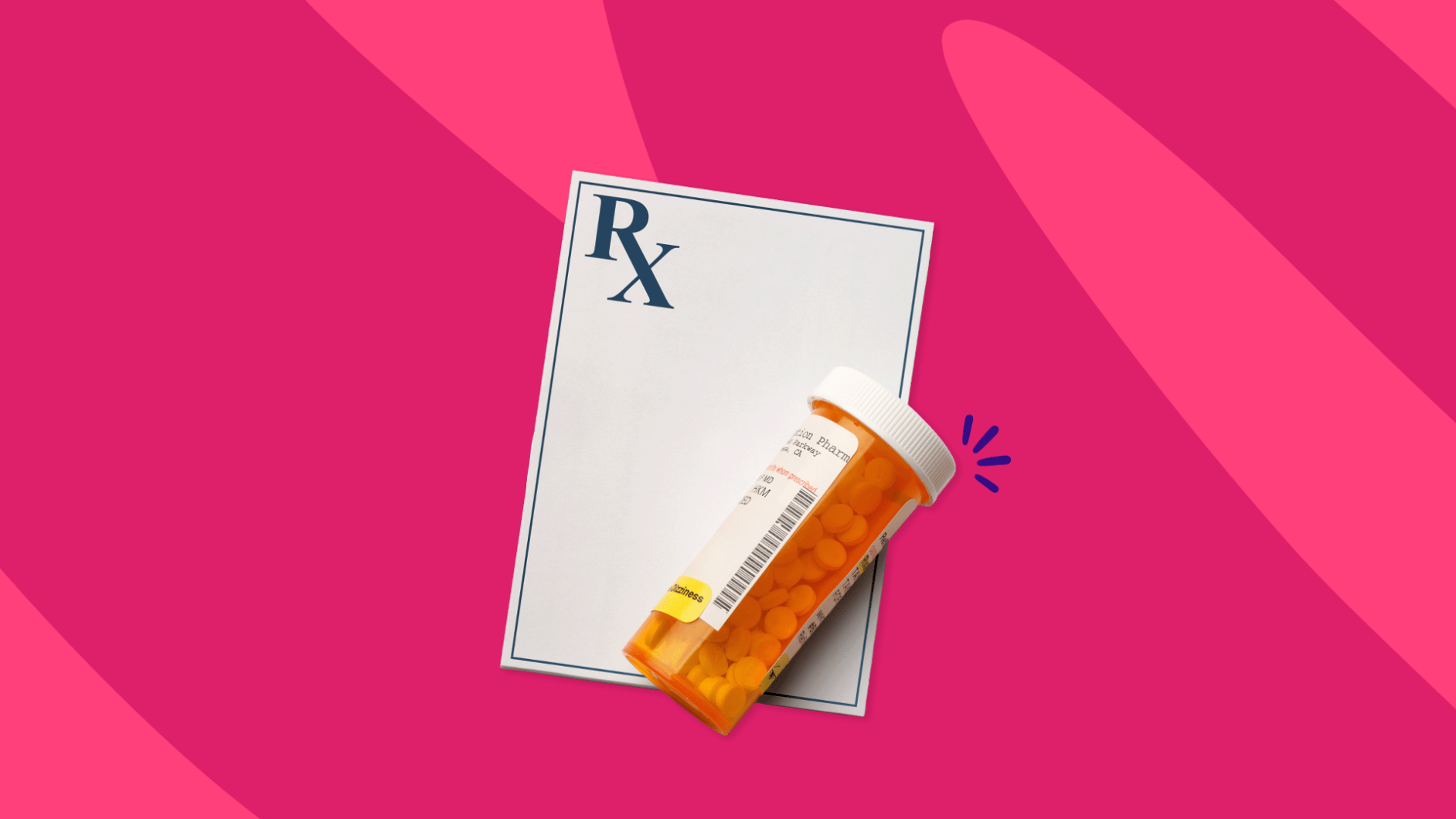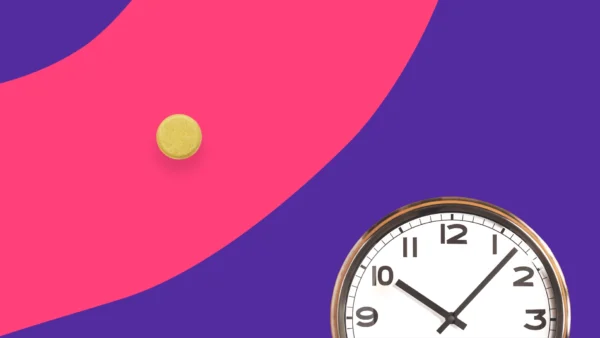Escitalopram oxalate is an antidepressant that is approved to treat mental health conditions, such as major depressive disorder and generalized anxiety disorder. It’s a generic medication, but it’s also available as the brand-name drug Lexapro. Escitalopram is usually taken once per day and is a medication that people take long-term for the management of their condition. Escitalopram belongs to a class of drugs called selective serotonin reuptake inhibitors (SSRIs). A class of drugs is a group of medications that work similarly. Escitalopram works by increasing the levels of serotonin in the brain. Serotonin is a chemical that affects your mood.
While escitalopram can be an effective treatment option for people, it has drug interactions that people should be aware of. Interactions can affect how escitalopram works, or they can cause mild or serious side effects. Several drugs may interact with escitalopram. Therefore, it’s important to take precautions while taking escitalopram. Make sure that healthcare providers know all of the medications you take so they can identify potential interactions ahead of time. This includes all over-the-counter and prescription drugs, vitamins, supplements, and herbs.
Continue reading to learn more about escitalopram and its interactions.
Key takeaways:
- Escitalopram is used to manage depression and anxiety.
- Escitalopram should not be taken with any monoamine oxidase inhibitors (MAOIs), any other drugs that increase serotonin levels in your body, or pimozide.
- Drugs that affect bleeding, such as Coumadin (warfarin) or aspirin, should be used with caution if you are taking escitalopram. Be sure to discuss using any new medications with your provider to avoid interactions.
- Be sure to tell your healthcare provider about your medications, including prescription and over-the-counter drugs, vitamins, herbs, and supplements.
Escitalopram drug interactions
There are several drugs that can interact with escitalopram. Some interactions may cause mild side effects, such as constipation, dry mouth, or trouble sleeping. While others can cause serious side effects, such as serotonin syndrome or glaucoma. Interactions may also affect how well escitalopram works.
It’s important to note that this article doesn’t provide a complete list of all escitalopram interactions. To avoid interactions, be sure to discuss all of the medications you take with your healthcare provider.
Monoamine oxidase inhibitors (MAOIs)
Monoamine oxidase inhibitors (MAOIs) are a class of drugs that are typically used for conditions such as depression and Parkinson’s disease. While they are an effective treatment option, their use is not as common because they can cause a lot of side effects and require strict dietary restrictions.
Escitalopram should not be taken with any MAOIs. This combination of medications can cause a rare but serious condition called serotonin syndrome. This is a potentially life-threatening condition that occurs when there are high levels of a chemical called serotonin in the body. Symptoms include high blood pressure, fast heart rate, sweating, muscle rigidity, changes in mental status, and seizures. If you experience any of the following symptoms, get medical help right away.
Due to this risk, there are specific timelines to follow if switching from an MAOI to escitalopram, or vice versa. Allow at least two weeks (14 days) to pass between stopping one medication and starting the other.
Examples of MAOIs include:
- Azilect (rasagiline)
- Eldepryl, Emsam (selegiline)
- Marplan (isocarboxazid)
- Nardil (phenelzine)
- Parnate (tranylcypromine)
- ProvayBlue (methylene blue)
- Zyvox (linezolid)
Medications that increase serotonin levels
Many medications may increase serotonin levels in the body. Escitalopram should not be combined with these drugs because doing so can cause an increased risk of serotonin syndrome.
Examples of these drugs include:
- Triptans, including Imitrex (sumatriptan) and Zomig (zolmitriptan)
- Amitriptyline
- Silenor (doxepin)
- Fentanyl
- Lithium carbonate
- Ultram (tramadol)
- Buspirone
- Dexedrine (dextroamphetamine sulfate extended-release)
- Tryptophan
Pimozide
Pimozide is an antipsychotic medication used to treat Tourette Syndrome. It can affect the heart’s rhythm by prolonging the QT interval, which is the time it takes for the lower chambers of the heart to contract and then fully relax. This can lead to life-threatening abnormal heart rhythms.
Taking escitalopram with pimozide may increase the risk of QT prolongation. Therefore, these medications should not be taken together.
Get medical help right away if you develop any of the following symptoms of QT prolongation:
- Racing heart (palpitations)
- Shortness of breath
- Chest pain
- Lightheadedness
- Fainting
Medications that affect bleeding
Coumadin (warfarin), non-steroidal anti-inflammatory drugs (NSAIDs), and aspirin are all medications that affect how your blood naturally clots. Coumadin (warfarin) thins the blood, while aspirin prevents platelets from clumping together to form blood clots. While these medications are effective treatment options for conditions such as stroke prevention, they can also increase the risk of bleeding.
SSRIs, such as escitalopram, can also cause bleeding problems. Therefore, escitalopram should be used with caution while taking Coumadin (warfarin), NSAIDs, aspirin, or other medications that raise the risk of bleeding.
Examples of drugs that affect bleeding include:
- Coumadin (warfarin)
- Advil (ibuprofen)
- Aleve (naproxen)
- Indocin (indomethacin)
- Xarelto (rivaroxaban)
- Eliquis (apixaban)
Escitalopram-food interactions
Sometimes, food can interact with medications. Grapefruit is an example of a food that commonly interacts with many medications.
Escitalopram and grapefruit
Grapefruit and grapefruit juice interact with several drugs. And it is possible that they can interact with escitalopram. While more research is needed to know if these products have a definite effect on escitalopram, it is possible that they can interfere with the way your body breaks down the medicine. This could lead to a buildup of escitalopram in your body, which can increase the risk of adverse effects.
Because of this possible risk, try to avoid grapefruit and grapefruit juice while using escitalopram.
Other escitalopram interactions
Escitalopram doesn’t interact with any specific beverages but consuming alcohol or caffeine can worsen the symptoms of your condition or worsen side effects of the medication. Escitalopram should also be taken with caution in people with certain medical conditions, such as people with liver problems.
Escitalopram and alcohol
Although alcohol and escitalopram don’t directly interact, it’s recommended to avoid alcohol while taking escitalopram. Mixing alcohol and escitalopram can worsen the medication’s side effects, such as drowsiness and dizziness. Additionally, alcohol itself can worsen symptoms of depression and anxiety, which are the conditions that escitalopram is used to treat.
Escitalopram and caffeine
Similar to alcohol, caffeine isn’t known to interact with escitalopram, but caffeine may make anxiety symptoms worse, especially if you consume large amounts of caffeine.
Escitalopram and dietary supplements
St. John’s wort is a dietary supplement that is most often used for depression. There are mixed opinions on the effectiveness of St. John’s wort for depression, and doctors typically don’t recommend taking it for several reasons. One reason is that it can interact with several medications. In fact, taking it in combination with escitalopram can raise serotonin to dangerous levels in your body. This can increase the risk of serotonin syndrome.
Be sure to discuss any supplements with your healthcare provider if you are taking escitalopram.
Escitalopram and certain medical conditions
People with certain medical conditions may be at higher risk of side effects from escitalopram. These people should weigh the risks and benefits of taking escitalopram with their healthcare professionals. If escitalopram is prescribed, you may require close monitoring. Some of these conditions include, but are not limited to:
- People aged 24 years and younger
- Older adults
- People with bipolar disorder
- People with kidney and liver problems
People who are pregnant or breastfeeding should always discuss the use of any medications with their provider. Taking escitalopram late in pregnancy can cause problems in your newborn. Furthermore, escitalopram can pass into breast milk.
How to minimize escitalopram interactions
Be sure to keep an updated list of all the prescription and over-the-counter medications, vitamins, herbs, and supplements you take and all medical conditions you have. Whenever you start a new medication, give this list to your healthcare provider and pharmacist. Having this information can help them prevent any interactions before they occur.
If you have already started taking a medication that escitalopram interacts with, ask your healthcare provider for medical advice before making any changes to your drug regimen. Do not suddenly stop taking escitalopram. Doing so can cause withdrawal symptoms, such as confusion, headache, or trouble sleeping. If needed, your provider will come up with a plan for you to gradually stop taking the medication.
When you pick up your prescription, it will come with a Medication Guide and Patient Information Sheet. Carefully read these documents as they contain important safety information, including information about interactions.
When to talk to a healthcare provider about escitalopram interactions
Be sure to talk to your healthcare provider before you take any new drugs to make sure it is safe to take with your current medications. Some interactions require the dosages of the medications to be adjusted, while other interactions mean the two drugs should not be taken together at all.
Additionally, communicate with your providers about any side effects you’re experiencing, even if you aren’t sure if they are related to escitalopram. In some cases, side effects may be related to a drug interaction.
This article does not provide a complete list of all escitalopram interactions. So it’s important that you communicate openly with your providers to ensure proper management of your health.
Sources
- Pimozide tablets, USP, Food and Drug Administration (2017)
- Drug-induced QT prolongation, US Pharmacist (2007)
- Warfarin sodium tablets (crystalline), for oral use, Food and Drug Administration (2023)
- Aspirin and platelets: the antiplatelet action of aspirin and its role in thrombosis treatment and prophylaxis, National Center for Biotechnology Information (1997)
- Grapefruit juice interactions with psychotropic drugs: advantages and potential risk, National Center for Biotechnology Information (2008)
- Alcohol and the etiology of depression, The American Journal of Psychiatry (2023)
- St. John’s wort and depression: in depth, National Center for Complementary and Integrative Health (2017)











